The Real Market With Chris Rising – Ep. 64 Eitan Tsarfati
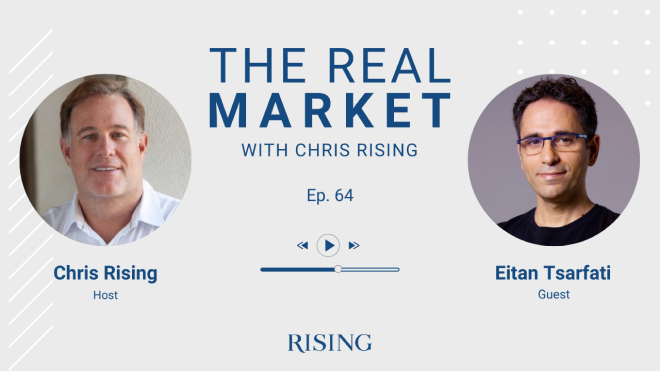
Chris Rising (00:00:02): Welcome to the Real Market with Chris Rising, the only podcast that brings the real estate conference panel to your headphones. You’ll hear from superstars from every realm of commercial real estate, the biggest brokers, the most well-known architects, the largest investors, and the most visionary developers. Learn what they do, how they do it and what drives their success. We’ll discuss the latest trends across regional markets, capital flows, both national and global, and we’ll explore technology’s role in shaping all of them. We’ll take a clear-eyed look at where we’ve been, where we are now and what’s to come. Real conversations, real experts, real insights. This is the Real Market.
Chris Rising (00:00:49): Welcome to the Real Market with Chris Rising. I’m really excited to have Eitan Tsarfati here with me today. Eitan, thanks for being here. I’m excited about having you here. Eitan is the founder of Swapp and Swapp is the world’s first AI driven construction planning company. Eitan has a lot of experience. I’m excited to go deep with you here on software and what’s happening in the architecture and construction area. So welcome to the Real Market.
Eitan Tsarfati (00:01:15): Happy to be here, Chris.
Chris Rising (00:01:17): I’m really glad we could work it out. Eitan is in Tel Aviv and I’m here in Los Angeles. So quite a challenge all the time to get the timing right. But thank you for being here. Eitan Tsarfati (00:01:28): Sure thing.
Chris Rising (00:01:29): Why don’t you tell us a little bit about Swapp?
Eitan Tsarfati (00:01:33): Well, Swapp as you mentioned is the… it’s actually the world first AI driven construction planning company. When you think about what it means to be a construction planning company, we all know about architecture [inaudible 00:01:49]. We all know about MEP engineers and we all know about the traditional way that they work. At Swapp, I think for the first time we founded a company that is driven by AI, where AI is the first citizen, and we provide planning services and we provide not only architectural services, but also MEP engineering, which is something very new in the industry. Not that architecture and MEP engineering as a bundle is new, but to have a company from the get-go deliver the services with the data-driven approach and AI algorithm as the engine behind it, this is something new.
Chris Rising (00:02:42): Well, I have to imagine given your background as an architect, as a young person, you were drawn to the pencil and the paper to draw and to do things. I would get this if you were telling me, look what it does is we take an iPad and you can draw, but that’s not in at all. Can you explain to people what it means to be AI driven from a construction planning perspective?
Eitan Tsarfati (00:03:04): Yeah. And you remind me back in the days that I did take a pen and paper and draw the buildings and imagined the buildings. In a way, what the infrastructure of the AI technology giving us is a way to imitate how a person thinks. We all know about the chess – the AI beating the chess champion. But if you think about the strength of the AI is actually taking a lot of data, analyze it, deduct the right conclusion and actually conclude the right conclusion and actually think on its own on all kinds of solutions. So I think for the first time today, maybe for the last three to five years, the machines can actually think and learn and rethink about problems in a way they couldn’t before. So I would say this is something new in the industry. It’s new in every industry that I can think of that the machine is suddenly getting to a place where it takes decisions. It takes the decisions about planning, it takes decisions that usually we could ask humans to take.
Chris Rising (00:04:34): You come at this, not because you had your own architectural firm recently and then started an AI company. You come from this quite a career in the way software has changed the architecture business. So can you talk a little bit about your experience at Autodesk and what led you from your architecture interface and what the path has been?
Eitan Tsarfati (00:04:56): Yeah, absolutely. I think there is a clear path between all the stations of my life and how did I get to this specific point. I did start my career as an architect and with the pen and paper, or the pedograph as architects, we all know the tools. Moved to AutoCAD, usually AutoCAD 2D. Was amazed by the fact that I can generate the drawings much faster and then was introduced to Revit. And as a young architect, I actually joined an architecture firm and I used Revit and I used all kinds of… even before it was introduced. The fact that you can actually model your building and not draw it line by line and actually not draw the same door or the same floor over and over again, was actually a huge innovation. After a few years in the architecture field, I founded my first company because I was always drawn to technology.
Eitan Tsarfati (00:06:09): I was always curious about what technology can bring. We might talk about it later, but even back then, people were kind of afraid, Oh, now the technology can help you model the whole building much faster than before, what will be with all of these people drawing by hand or what will be with all these people using AutoCAD. So there is always the question of what it will do to the labor of the architects and planners. But always you would see, I think that jobs changed and the way that people planned and used the tools actually changed the way they work and changed their behavior as an architect or as a planner, kind of saved time to what really means to be a planner. This was kind of what I did in my first startup. I thought of the next new thing of how to automate some of the rendering, some of the generation of 3D environments using all kinds of technology. Back in the days I think iPhone and iPad were the big new things that were introduced, and we used that in order to capture 3D through a camera.
Eitan Tsarfati (00:07:43): I did the startup for about four years and then got acquired by Autodesk, the world leader for construction software or AEC software, architecture, engineering, construction. Then I moved to San Francisco, been there for one year. I love the city, I love the vibe, love the people, loved Autodesk and everything that’s relevant to construction. Software for construction was there. This is the heart of everything going on. After Autodesk… and then I moved back to Israel to be the CEO of Autodesk Israel, where I led about 200 people developing all kinds of software for the field of construction.
Chris Rising (00:08:34): If I can just stop you real quick. So you’ve gone from being an architect to an entrepreneur to it sounds like you were even maybe writing your own code, or at least got yourself familiar to be a computer engineer and then-
Eitan Tsarfati (00:08:47): Actually, I took lessons. If there are architects in the audience, I would recommend that you just take lessons in coding. Even if you don’t intend to be a developer, it doesn’t matter. If it’s software developing, it doesn’t matter. It means that you will get to know better technology. It means that you get to know better your future colleagues, which will be software developers, whether you like it or not. Look at every industry, you go to a bank today. Half of the bank is software developers, whether you like it or not.
Chris Rising (00:09:27): Steve Jobs was often quoted as saying that he thought the thing about learning code was it taught you how to think, which is the same thing of going to law school. Maybe you don’t want to be a lawyer, but just how you think. And they say the same way when you learn to program a computer. I agree with you. I think every company is [inaudible 00:09:47] whether you like it or not. And if you could fight it, you’re probably going to be out of a job. But when you learnt Autodesk [crosstalk 00:09:54]. Oh, go ahead.
Eitan Tsarfati (00:09:55): No, Steve Jobs is an excellent example because Steve Jobs, he’s like the designer that everybody loves. He is the guy that brought the design to the front seat. In everything that we do, and in everything that we touch. And it means that even this guy, which is all about design is talking about software. It just means that it’s a part of our life and we need to get to know it much better in order to become part of the present and the future.
Chris Rising (00:10:28): I agree with you. I’d like to zero in a little bit. So you moved from Tel Aviv to San Francisco after they bought your company? So you’ve gone from being an entrepreneur to a larger company. How did that fit for you as an entrepreneur and what was your job the first year that you were in San Francisco?
Eitan Tsarfati (00:10:48): Wow! That was overwhelming. From a startup to a corporate, it was overwhelming. In a start up as a CEO and the co-founder, you decide something the next day it happens. In a corporate, there are like 100 stakeholders that you need to talk to and see that everybody agrees and there’s many software and applications that you need to connect to in order to provide, just generate a new feature. So it was pretty much overwhelming. Not to mention the whole system. You get into a system of thousands of people. And not to mention also you moving from Tel Aviv to San Francisco, which is different culture. I would say that it’s an experience I recommend everybody to do because it’s kind of expose you to how the world runs, kind of expose you to, there is a place where you can run fast. These startups with all the risks, and there is a place when you can run slowly but the thing that you do has much weight to them.
Eitan Tsarfati (00:12:14): I think it’s Autodesk CEO in one of the discussions that I got lucky to be a part of, Carl Bass, he said something like, “When you’re a startup and you do something, it’s like a small hammer, you just do something it’s fast, it’s quick, you make a change.” When you are a big corporate and you make a change, it’s a huge hammer. It takes time to lift it. It takes time to hit it, to hit with it. But once you do, it’s such a strong hit and it makes waves much stronger, much louder than any other startup can do.
Chris Rising (00:12:53): What were your responsibilities when you moved to San Francisco?
Eitan Tsarfati (00:12:57): Actually, I had a P&L, profit and loss. I had my own product, a product that I sold to Autodesk. This is something Autodesk is doing very well. They keep you running your own product. So you don’t get overwhelmed with all the things that you need to do in the corporate. But then it got bigger and bigger. We started with Homestyler and then it got the home and building platform and you get more and more products in it and more and more people involved. Actually as the years go by, you get more and more experience. You’re in a high level in comparison to a person that just got into Autodesk, because you’re an entrepreneur, you sold your company, the corporate trusts you to make the right decisions. So you get the larger group. So this is what I did. Then when I came to Israel, I got the responsibility to run the whole R&D center, which I’m grateful for.
Chris Rising (00:14:02): Wow! As the product that you sold there and as more people got involved with it, was it someone that was a little bit of a feeling like someone raising your child in that what you wanted to do, now you had a hundred voices saying, “Well, maybe we should do this.” Was that a frustrating thing or a…
Eitan Tsarfati (00:14:24): Oh my God. Yes. I mean the first year, no, the first year the corporate let you do what you do. They acquired you. So they trust you to grow your own product. But then because you were in such a large company, the quota as the sales people like to say is getting bigger and bigger. It’s not a quarter of a startup, it’s for a corporate. So I would say that once you have a bigger quarter, bigger expectations from the corporate, I would say that you get more people involved. It’s not your baby anymore. It doesn’t belong to you. But it’s a lesson you have to learn. You get people under you, in China, in the U.S., in your hometown and they all have to work together. Three different cultures need to work together for a specific goal that you need to outline for them. So, in a way it’s a very [crosstalk 00:15:36]-
Chris Rising (00:15:37): You’re a software developer, you’ve got to manage a big team. How did you all communicate when you were at Autodesk? And what were the frustrations that made you go, this isn’t going to work long term. Was there a software you all use? Was it a Microsoft Teams kind of thing? I mean, because if you work in a global business that you had to manage, that had to be difficult.
Eitan Tsarfati (00:15:59): Yeah. Believe it or not Teams were not even exist back then. So now you have Teams, you have Slack, you have all these nice tools. Back then you didn’t have that. I would say two big things or two big challenges that you have to overcome with so many people in three different continents. One is culture, before everything is culture and second is time zone. Time zone, you can deal with two continents, but what do you do when you look at the far East, look at the Asia time zone and try to connect together people from the U.S. and Israel, it’s almost impossible.
Eitan Tsarfati (00:16:46): In terms of culture, that was the biggest thing because the three difficult cultures are pretty much different. Israel and the U.S., maybe it’s more similar, but it’s more similar because people used to work together and people got to know how Israeli work. Israeli got to know how the U.S. folks work. But China, U.S., Israel, it’s a whole different challenge.
Chris Rising (00:17:22): Yeah, I bet. What led to your move from San Francisco back to Tel Aviv? Why did Autodesk decide, you know what, we need to have a big operation in Tel Aviv, and we want you to be the CEO. Eitan Tsarfati (00:17:34): Because Tel Aviv and Israel is a big innovation hub, not only for Autodesk all over the world. Which has an upside and downside. The upside is that many companies build their own branches there, hire people, which is great. In a radius of 100 meters or 200 meters from our office, you have Facebook, you have Apple, you have Amazon, you have Autodesk, everybody’s there. Which is great. And you kind of leverage the talents in Tel Aviv, the technology in Tel Aviv, which is great. The other thing I would say the downside is for startups. Eitan Tsarfati (00:18:26): Now I’m putting the hat of the entrepreneur and it’s very hard to compete with those corporates. Let’s say you found a great developer and he really wants to work with you, and suddenly gets a proposal from a corporate. And with RSUs, is that a big salary? And he just had his first child, and he’s thinking about the future. There you go, you lost your edge. So I would say this is something that’s very frustrating to a lot of startups. I don’t think it’s only in Tel Aviv. I think it’s a lot of places when you see big corporate coming in and taking the hot talents. Chris Rising (00:19:09): Yeah. Let’s talk a little bit about Tel Aviv. I think that’s important to get a sense, why you think it’s become such a hotbed for software innovation and why you think it’s a great place for Swapp to start its growth period. Eitan Tsarfati (00:19:28): I’d say it’s a good question. Why Tel Aviv is such a hub for technology and where did it all start? I would say that it began sometimes in the ’70s or early ’80s, when we saw a big movement from the USSR, right. Russia back then we had a lot of people coming from Russia, Jewish people and there were a lot of engineers. What the government did back then, they encouraged those engineers to work in their space, to actually to leverage their talent. So the government created all kinds of programs for that to happen. And incentivized also the VCs of today. Back then it was small VCs, now it’s big VCs investing in them. It was before the government took part in the investment. And you know, by the way, it’s still going on. Like the government is still trying to support new startups. Eitan Tsarfati (00:20:45): So I would say the infrastructure was there for companies to get founded. The army in Israel also is… there are all kinds of units that nurture people with skills and not just throwing them to a place that you can’t leverage their skills, but actually nurture them and actually have them expand their expertise and skillset. So I would say this is a combination of the few things in Israel that got to the point where it’s at. I think for… if you look at innovation per capita, Israel I think is number one in the world. Chris Rising (00:21:30): I am not surprised. I’m continually amazed how many people that I deal with in the real estate industry who are Israeli, come from Tel Aviv or at least Israeli. It’s a very global city Tel Aviv and it touches a lot of different time zones, but I do think it’s unique that as you said that you see that Amazon’s there and you see that… how has the city changed in your lifetime because of this kind of influence. We’ve seen our cities like Silicon Valley come out of Apple orchards and orange orchards to be this paved suburban office complex. And then you see San Francisco, the way it’s gentrified and the cost of living exploding. Has Tel Aviv had any of those kinds of things happen? Eitan Tsarfati (00:22:19): Absolutely, absolutely. As you mentioned, it’s a global city. As a global city, it looks very much and is going through very similar processes, very similar things like San Francisco or any other big city that gets the gentrification and get new people coming in, new companies setting their headquarters there and it affects everything. Even the neighborhood that I live in, I lived here for about 10 years and in this specific 10 years, the neighborhood changed a lot. I can see from my window if I look right from a window right now, I could see three, four new high rises and one in the making. And I didn’t see that. I see just the blue sky 10 years ago, and now I see all these high rises and it affects the rent prices. It affects the value of the apartments here. So people with no money couldn’t get a new apartment, couldn’t rent. So it brings new population, new people that work in these offices and that the whole neighborhood is changing as a result. Chris Rising (00:23:45): Has there been any efforts once the tech community that’s been so influential will try to help make change or is everybody just really focused on their startup or working at Facebook? Eitan Tsarfati (00:23:57): I would say yes, it’s a process. I think there is a new wave of change because the percentage that work in the high-tech industry in comparison to the whole population is not big. So, as apartment and prices getting higher and higher, the ones that are not in the high tech company are feeling it much worse than before. So there is a big movement here of getting the prices lower, trying to move from this craziness of it’s just tech or it’s just the highest prices. It affects people, I would say. Chris Rising (00:24:50): Well, let’s kind of veer back to you leave San Francisco, you become CEO of Autodesk. How long did you have that gig? That you were the CEO of Autodesk in Israel. Eitan Tsarfati (00:25:02): In Israel, three years. Three years altogether, four years in the company. Chris Rising (00:25:09): Your mind’s going, you’re there and at some point you see this lane, you’re like, you know what, that entrepreneurial bug is too big. What was the lane that you saw? And it sounds a little similar to Eric Yuan of Zoom who was at Cisco and kept trying to bang his head against the wall there saying you got to do this, you got to do this, you got to do this and they didn’t do it, and so he left. Do you have a similar story? Eitan Tsarfati (00:25:32): Yeah, pretty much. And I think a lot of entrepreneurs go through the same experience. When you are in a corporate, you feel the strength and the power of the corporate. The first thing you want to do is to leverage that in order to make even bigger things that you couldn’t have done as an entrepreneur. The corporate as an environment tries to give you this opportunity to do that. But until a certain point where you start hitting the wall and you… and don’t forget people that came from entrepreneurship, they made changes as entrepreneurs. They did see things change because of what they do, because of the actions that they took. Eitan Tsarfati (00:26:23): So then trying to take the same actions or even similar actions to what they do and nothing happens, or it just takes too darn months or sometimes you have to wait half a year for something to happen. This is pretty frustrating for a person that did it in a few days or weeks. So I felt the frustration too. And the bug is there, you are thinking about the next… and you have ideas and you know. Chris Rising (00:26:59): SO, your original product did not include any artificial intelligence. Correct. So you’re at Autodesk. They’re trying to sell that, make it better, add new features. And then after three years you decide there’s a lane for artificial intelligence- Eitan Tsarfati (00:27:12): True. Chris Rising (00:27:13): … to somehow be employed. I know that it’s always easier. We could do a demo, but since it’s a podcast, can you explain what that step was going from human input and software around it to make it better, to now the humans aren’t inputting it? What was that leap that you made? I mean, do humans say, “Hey, I want three conference rooms,” or keep to a house. “I want three bedrooms and two baths.” They just leave it at that. And then they get the dimensions and then the AI takes it and runs with it. Where does that AI fit in and how was that different from what you left at Autodesk? Eitan Tsarfati (00:27:51): I’d say it’s a good question. I think that and don’t get me wrong. There is a lot to innovate even without AI. There is a lot of things that you can do even in today’s software and the input should be much more easier. And the inter-ops between the different software should definitely get better and will get better and better as we speak. I think the main thing I saw is that people still do the same thing over and over again. Decisions that they take can be taught, it can be taught by the machine. Even the conversations that you see between planners, people that use the software, you can learn a lot from how an architect talk to an MEP engineer or a customer talking to an architect. Eitan Tsarfati (00:29:00): Now I’ll give you a real example. Take WeWork for example, right? The company that provides offices and you go around the world and you go into a WeWork office. It pretty much look sthe same. Pretty much there are rules. There are specifications that are similar in each one of the branches. There are decisions that people take in different parts of the world, which are pretty much the same decisions. And if you think about, what’s the common thing about it, it’s data. If you can track all this data of specific vertical in the office spaces or specific vertical in the residential space, and you understand what kind of decisions we’re taking over and over again, similar to other decisions, you can deduct, you can actually think about, hey, the computer can actually think about it. Eitan Tsarfati (00:30:04): If you have the right infrastructure and you put the right data in place, computers can take these decisions and actually generate the same output as you would you in an input mode or any other mode. Chris Rising (00:30:22): So when you left Autodesk and you said, I want to do an AI for construction planning and this AI… the route of it, someone’s still got to write all the software and come up with all the different tangents so something can go. So it can lead itself to a decision. That sounds like an overwhelming task as a startup. It sounds like it needs a lot of backing financially and a lot of pieces. Did you just leave on your own and out of your garage kind of do it or out of your apartment [inaudible 00:30:51]. What was the step, from Autodesk to starting Swapp? Eitan Tsarfati (00:30:56): Yeah. And I know there are entrepreneurs listening, so whoever is out there you should get prepared because I had my first startup and I knew the rollercoaster, and I knew what it means to work without any money, to work without any funding. For quite some time, I prepared myself and I talked to my wife before that, what’s going on in the bank and thought planned the first year budget. Like you plan your budget for a company. I took my own personal budget with family expenses and everything, and think what if I’m not raising one single dollar for the next year. Eitan Tsarfati (00:31:45): When the answer was, okay there is no disaster. And the best thing is to try and to set the highest goal in what you believe in and just go after it. The worst thing that can happen is that you won’t succeed, but that’s a result. This is a great result. You tried your best, you sacrificed a lot, but you did whatever you can. So you prepare yourself and you work for quite some time without money and you convince other people to join you and work for the same non-salary for the promise that- Chris Rising (00:32:30): Were you really writing that code? Is the basis of Swapp code you wrote yourself, or did you… Eitan Tsarfati (00:32:36): No way. My code is the worst. People need to know what they’re good at. I know I’m good at product management, managing a team. Some people would say I’m pretty creative, but I immediately took the best two co-founders that are the best coders and best technology people that I know. And that’s, I think the best thing for any entrepreneur when you start, is to acknowledge what are the strong sides that he has, and now try to do something that there are better people than him. You can do that. And maybe by the way, it’s also right for an entrepreneur who is thinking about himself as a CEO, but he needs to ask himself, look in the mirror and ask, am I the best CEO for this company? Or maybe I should be the CTO. Maybe I should be the product manager or the marketing manager, people should ask themselves what would be best for their companies before they start a company. Chris Rising (00:33:48): Well, let’s talk a little bit about the product Swapp. So I’ve had Andy Cohen of Gensler on, and I’ve had [Jody 00:33:55], I’ve had a few of the big architecture firms and they all talk about the compliment that software has been to their business. To date I haven’t heard an architect say, “Oh, this is so good. I’m not needed.” When we first talked about this, that was kind of one of my first questions. Are architects going to be running for the hills saying this is going to take away my job or talk a little bit about how Swapp would work with an architectural firm. Eitan Tsarfati (00:34:19): Yeah, that’s an understandable fear. People, when they see something new, as I mentioned, even 10 years ago, people were kind of afraid of what machines can do. And we all know about movies, right? Dealing with that, not from today, right? From 10 years ago, 15 years ago, machines are taking the place of people. I would say that when architects are telling me, “Hey, this is going to replace us.” I would say that it’s going to change the job, their job. So if you’re doing the same thing and not evolving and not thinking to developing yourself, maybe the machine will replace you. If you just do the same thing thinking of how to develop yourself and your skills. Eitan Tsarfati (00:35:12): But if you are developing with technology and you understand the power of technology, as I mentioned before, you understand that your future colleagues will be software developers and the machine will work right besides you and complete your talent, you’ll actually find a way to nurture your skills, to develop as an architect. Then your human creativity will get better and better. And these are the architects of tomorrow. The one that really take advantage of their human skills rather than their robotic skills. Chris Rising (00:35:51): I like that explanation. Let’s make it a little more practical. So if you’re an architect today, and anytime you say, I’m going to do a demo of Swapp, what exactly are you showing them? And then we’re going to have everything here in our notes so that people can go to the website and understand it, but just give a brief explanation what a young architect would experience for the first time using Swapp. Eitan Tsarfati (00:36:13): I would say a young architect would probably see things that he’s doing today done by the machine. For example, he would probably see a whole layout generated of office space or residential by the software by inputting enough information. And suddenly things are getting generated, whether it’s a layout or a complete model of a building. And this is something that they’re are not used to see this. If you look at an architect… When I was practicing as an architect, there were the definitions, you had rules, and next thing you know, you sit in front of your AutoCAD or Revit, and you start building it. Line by line, door by door. And suddenly you hit the button and you see the whole model generated. And that’s kind of like a magic, which makes you maybe scared for the first minute, but then you’re saying, “Okay, nothing is final. There is still a place for the human to interfere to correct [inaudible 00:37:37]. To see where the machine is generating something which lack maybe the soft skill of the architect or the feel of a space, or even the urban context, or the cultural context that humans are so good at even without thinking about it, right? Eitan Tsarfati (00:37:58): You don’t think about it, but we’re very good at the soft skills of… You can show an architect, then he would say, “No, something is wrong here. Maybe the urban context, maybe the design, maybe something about the shape.” And even before you can explain, you can get your input, your human input into what the machine has generated. Chris Rising (00:38:18): If that young architect logs in, does the AI start to learn what they like individually, or is it more of a corporate tool where it’ll know what lots of architects like. I mean, at some point, does the AI figure out some of this human touch? Eitan Tsarfati (00:38:36): I guess in a way there is a human touch or a few rules that the AI can take, but [inaudible 00:38:47] we do is actually existing data and generate something similar or generate something in the area of what he learned to do or so. I’m not sure how the word like can be translated to the AI. But as an architect, I don’t think they need to be afraid of AI replacing them altogether. Chris Rising (00:39:19): If you’re a construction company, construction management, and you use this software, do you rely less on architects or architects, MEP engineers. I mean, if you’re just the one who takes the finished plans and goes and executes, do you need to have as much in the architect [crosstalk 00:39:37]. Eitan Tsarfati (00:39:39): You have to. You have to because… And I’m thinking not on the software today, even five years from now. I would say that the GC will ask the architect to go over the plans or the architect will be a stakeholder from the owner’s side to go over the plan to see that it has the human touch. It has to has human touch. Because eventually you don’t want to build buildings for robots. You build buildings for humans, and the best planners are humans, and there are always edge cases, and there are always things to solve with the human mind that I do believe that architects will have a place at the table. They will just make better decisions. They will just use the technology in order not to count areas or to do tedious repeatable tasks. They will just look at the machine as kind of the best helper. Chris Rising (00:40:48): Well, we’ve just gone through this horrible year with COVID and the pandemic and shut downs. But one of the things that jumps to the forefront is what software has done to make working from home easier, working from anywhere easier and all of that. What has happened with Swapp in the last year? Have you seen a business increase or demands on what you need to create increase? Eitan Tsarfati (00:41:11): Oh, yes. There was a lot of effect. Luckily for us a positive effect on the company. First of all, remote planning was suddenly not a bad word, right? Usually to look at the industry, the traditional industry, it’s very local. If an architect is working in Florida, he’s working in Florida. But if you think about COVID, what happens is that everybody talking Zoom and everybody is connecting through conference calls and all the meetings are in video. And suddenly it doesn’t matter if I just sit across the street or a city in another continent, if I generate good outputs, there you go. I can be your customer. I can be your service provider. It just makes sense. And that this is one. Second, if you look at the industry as a whole, if I can maybe have some conclusions, there was a big move from offices to residential. Eitan Tsarfati (00:42:18): When we started Swapp, we started only with offices, but pretty quickly when we saw COVID, flying towards our area, we said to ourselves, we have to do residential. Because it just makes sense that people will start residential, would be a conversion from offices building to residential, and it did. And we saw five X growth in people coming to us in order to help them with their properties, real estate developers thinking about, “Oh my God, we have an office building. What do we do? How do we plan it, adjusted to COVID? How can we convert it? Can we convert it to residential?” And all these questions were good for business because these are the things that we could solve with them. Chris Rising (00:43:16): Now, I assume this is all a cloud-based software. So it’s not relying on people that have computers with huge amounts of ram and huge amounts of memory and graphic cards. You can really use it off a MacBook or you name the Microsoft type computer. So that is game changing in and of itself, because most of what happens in an architectural form at the office is working on CAD or working on Revit. Because those were not built on the cloud. They are now, but they weren’t built on the cloud. Do you have some sort of mover advantage you think, because this was architected for the cloud originally? Eitan Tsarfati (00:43:53): For sure. And this is the process that I went through with Autodesk. When I started most of the software suites were desktop based and the whole company moved to cloud. Product after product until at a certain point there was kind of a strategy meeting. And again, I was lucky to participate and the decision was okay, we have to move everything to cloud because cloud is the way we can charge better. We can update our software better. The technology and the infrastructure is good enough to hold big computing problems, big models for the industry. It’s about time. It’s not something that 10 years ago, people would probably laugh at you or 20 years ago, who would probably laugh at you. What do you mean? Eitan Tsarfati (00:44:54): The whole building and on over the cloud, just unheard of. But today it’s where most companies should go. Even companies that do in 3D. I know that there is a place, there are companies that are doing things still on desktop and they can use the hardware of the user better than what you do over the cloud, but they’re missing all the computational power over the cloud. There’ll be seen updates over just in the heat of the button. Today, our customers… funny story, we had a call with one of our customers and he just asked for something, a feature. Oh, just click refresh. Refresh your page and there you go. He had the feature, because it was just updated. This is how great it is for cloud-based products. You could just update everything and we all know it. It’s almost transparent to us. You go into your Gmail today, it just got updated. [crosstalk 00:46:02]. Chris Rising (00:46:03): So how big is the company? How big is your company now and how many people come into an office every day? Eitan Tsarfati (00:46:09): We’re 20 people right now. And it’s a hybrid situation, not everybody’s coming to the office. I would say on average we see between 10 to 15 people which is a great improvement if you think about the whole year that we’ve gone through. Because now we in Israel, many, many businesses got back full-time. The restriction to wear mask outside is gone. You don’t need to do that anymore. You just put masks indoors. And there are all kinds of other limitations that got removed. Even events, you can hold events with many people in closed rooms, in closed spaces which is great. So I would say every month we see more and more people come to the office. Chris Rising (00:47:06): Now, when you have your team in the office, what’s the purpose? Is the purpose to be creative, is the first that people have their head down writing code. What’s the purpose of your interaction in your office today? Eitan Tsarfati (00:47:20): Let me quote, I think he said it was Netflix CEO. He said, “12 hours after they find the vaccine everybody’s coming back to the office.” I don’t care. Well, I’m not that extreme. But I would say that I’m a big believer in people coming to the office. The magic of this friction between people when they… and it’s not just next to the cooler or the coffee machine, it’s on a day to day situations. People sit with each other, it’s much better than people working alone, and just connecting through the Zoom and Slack. I know that there are a lot of software developers. A lot of people would say, no, I can be creative. I can be productive, much more productive when I’m at home. Eitan Tsarfati (00:48:23): For me and excuse my French, this is bullshit. People come to the office, they talk to each other, they understand better. We are humans. We communicate on the most primitive way of physical gestures. And there’s a lot of articles that say that people don’t look at you. They just look at your gestures. They don’t even listen to what you say. They just look at what you do with your hands, with your face, your gestures. And it’s very true. And this is how people work together. They look at each other, they trust each other. And the fact that even one person smile to each other in the office means that they will collaborate much better. Chris Rising (00:49:07): Are you seeing Facebook and Amazon or those types of companies kind of coming back to work in Tel Aviv [inaudible 00:49:15]? Eitan Tsarfati (00:49:17): They will all come back to the office, even in the U.S., you hear a corporates like Google, “Hey, we’re going to work from home until you summer 2026.” Forget it. When there is no risk, everybody’s coming back to the office. The whole organization tells the people, “Okay, we thought it will be different, but hey, you have to come back.” I guess there will be a year of high breed and people will stay for a few days, but then people will just forget. Chris Rising (00:49:50): The fear of missing out. That’s what I often say. The first time you lose a deal because you didn’t fly there, the first time you didn’t get a promotion because you weren’t in the office. What I find interesting is actually I find work fun. I don’t find it awful. I like my life and coming in, and it’s a place where I can focus on this because I have children, like you have a daughter and a wife and it’s much harder be at home, focused on them than focused on work. It’s just… [crosstalk 00:50:18]. Let me actually- Eitan Tsarfati (00:50:19): I had a conversation today. I had a conversation with a customer, suddenly his daughter came in and you saw the expression of his face. Even today after a year and he was so irritated by… I would say he would probably prefer to be in the office [inaudible 00:50:38]. Chris Rising (00:50:38): Yes, I would bet. Well, let me ask you this, because you have a child who’s three and you’re looking at the future. What do you think this is all going to look like in, I don’t know five years? What’s Swapp going to look like. What’s your vision? What do you think software is going to do to our world in the next five years? Eitan Tsarfati (00:50:59): Okay. There are two questions here. For Swapp, we founded this company from day one to be a unicorn, to be a billion dollar plus company. Everything that we do is aimed in this specific direction. I had a company, I didn’t sell it for a billion and more. Now I’m in my next phase of my life and I’m trying to get the right partners. I’m not taking any money from investors. I’m taking the right money for us and the people that can help us scale faster into the scale of the competitor we want to be. So this is Swapp. We’ll probably say we’re going to be a much bigger company, revenues and everything. Healthy company. I believe in that. As far as software, the only prediction I can give you is for software for construction. Software for real estate. The software as a whole, I don’t know. I’m too modest to actually say something about it. Eitan Tsarfati (00:52:02): But as for construction, I would say that the adoption of software within the industry or any company will be 100 X more than it is today. I can feel it. I see it when I talk to people, to customers. Don’t forget I talk to the same customers five years ago, 10 years ago, and 15 years ago. The difference between how companies perceive technology today, in comparison to what they did before is huge. People suddenly have a CIO, chief information officer, suddenly they have a VP of technology, innovation groups. They understand. You talked about FOMO. They are terrified of missing that. This is TOMO. Chris Rising (00:53:00): On the construction side, when do you think a software like Swapp with AI converges with modular housing, modular building or 3D printing of buildings? When does the actual building of the building catch up with the technology that’s around how you plan to build the building? Eitan Tsarfati (00:53:23): That’s a big question. When I founded the company the first thing I told myself, I’m going to keep away from the hardware part of that. Delivering innovation hardware is… building a technology company is so hard. Doing it with hardware is even harder? There are so many things to solve in hardware. 3D printing of houses. I’ve dealt a lot with 3D printing. 3D printing for houses is so complicated, just to mention the different materials, the different standards that you have to meet. The road is even longer there. I would say software will be the first to… you see some breakthroughs in software much more before you see hardware. If it’s hardware, it will be sensors and small things, but 3D printers, I would say there’s still [crosstalk 00:54:29] a way to go, yeah. Chris Rising (00:54:34): When you look at your company today and it being… one of the things that I think is amazing is the market share that you have out there, because the fact is architecture schools are producing people all the time. They’re coming out of school and they go into local communities and it’s not just the United States or Israel. It’s all over. This is happening all over the globe. Your technology really gives somebody who’s just a lone architect, or maybe a couple of architects, the ability to go compete right away to try and get business. What do you think are the things that you need to add to help that small architect or the smaller architectural firms compete with the big ones? Or what’s different about someone who’s trying to build individual homes for people versus someone who’s trying to build a mixed use campus in the sense of your software? Eitan Tsarfati (00:55:24): People. The obvious reason is people. Today, the whole industry is based on an hourly based fee. There’s a reason for that. The more people you have, the larger projects you can handle. I mean if you look at architects that are like… a couple of architects just started their own office. If they receive a big project, they either need to hire fast a lot of people or to use freelancers, but they need people. With the advancement of technology, they don’t need it anymore. And I would say another thing, look at the bigger companies. There is also an opportunity for them, because think about a bigger company, who handles 50 projects a year, right. Now they can handle 500 projects a year. So it’s an opportunity for them too. Chris Rising (00:56:15): What I find interesting coming out of the pandemic and the global recession that we are experiencing, but seem to be getting ourselves out of rather quickly, is recessions are times where people can make cuts that are always difficult, they have a reason to do it. And so you see businesses get smaller all the time, and you see them take less of a footprint. You can see that if we’re going back to the ’70s. In the real estate business and the office side, you had a million square foot tenant in the ’70s and ’80s who would sign 15 year leases go to a 500 to a 250. And now you’re seeing law firms, big international law firms that really only need 50,000 square feet in a certain city. So you see this over and over again. Chris Rising (00:56:59): And I think one of the things that you’ve just articulated is why the architecture business will get smaller in terms of people’s footprint. What happens to those architects who can’t… Do we have to worry that it’s not just architects, it’s lawyers, it’s accountants, that AI is starting to eat into that. What’s your view of how… is it so far out that it’s really not our generation that’s going to have to solve it, or is this going to hit us in five years, where a lot of unemployed people who thought because they could draw with a pencil, they would have a job for life. Eitan Tsarfati (00:57:33): There is the natural course of processes, of where technology comes in. And suddenly even in down times like this, that companies understand that they need to cut in labor. I do not think is as a zero sum game, I do not think it is a way that say, okay there are X amount of people in this industry and now there are layoffs and these people will have no jobs. I think there are new jobs popping out, and there are new things in technologies that create a lot of new professions. Eitan Tsarfati (00:58:25): So even professions that we don’t know about. Just think about the professions that we have today. What is an Instagram influencer, right? Nobody thought about that a few years ago. What is an influencer? What is it YouTuber, right. There are all kinds of people making money, making a living in new ways, new professions that I think would happen in every industry. So I wouldn’t look at it, oh my God, people would have nothing to do. It will be different. Chris Rising (00:59:02): I appreciate that. I always try to go to 45 minutes, but we’re right at that hour mark, which I love because it means it was an engaging conversation, but I know- Eitan Tsarfati (00:59:09): Awesome. Chris Rising (00:59:09): … that there are a lot of people in the real estate industry. It’s not just real estate developers and investors, but a lot of architects [inaudible 00:59:15] and a lot of construction people. If you were going to give a young person some advice about being an entrepreneur, and obviously these things are sometimes turned into soundbites, but you’ve lived this life. You wouldn’t got all the right schooling and your parents must have been very proud when you got that first architecture job. Then they saw you become an entrepreneur, and then you had an exit and they must have been so proud of that. And then now you’re out being an entrepreneur again. What’s the advice you would give someone young who wants to take this kind of risk? Eitan Tsarfati (00:59:49): Don’t do it. No, I’m kidding. I’m kidding. I’m kidding. I would say it’s a counter intuitive kind of thing to say, don’t talk to so many people because people are so different and if you talk to other entrepreneurs and they will convey the idea that it’s very hard and you need a certain type of people. This is why I hate the… sometimes you hear a podcast and someone, a VC or investors say, “Hey, the kind of entrepreneur that I want is ABC.” Who says, right. And not all people are alike and not all founders and entrepreneurs are alike. I would just tell people to go and try it out, try it out. Nothing bad will happen. And you probably have a great experience. You’ll do something you love to do. Maybe this is the first advice. Go do something you love to do. You learn a lot in the process and even if you fail, this is not a failure, you’ll just evolve and you get better when you come from the other side. So that’s my only advice. Just do it. Chris Rising (01:01:19): I think that’s good advice. Eitan Tsarfati (01:01:21): Like Nike. Chris Rising (01:01:22): Yes. Just Do It. We didn’t get into basketball. I know you’re a big basketball fan, but that has to be for another one. When we get this billion dollar exit that I’m hoping that you’ll have. Eitan, I really appreciate it. I hope to see you when I get to Tel Aviv. We’ve got some investors there. From there now it makes it even more worthwhile to get out there. So thank you so much. Eitan Tsarfati (01:01:43): Thanks [inaudible 01:01:44] Chris. I enjoyed it very much. You were an excellent host. Chris Rising (01:01:47): Oh, well, thank you. We’re going to have a lot in the notes about Swapp, so people can find it and hopefully the architects listening will go get a demo and take a look at it. Eitan Tsarfati (01:01:56): Yes. Chris Rising (01:01:57): Thank you so much. Please remember to subscribe to The Real Market Podcast. You can do it on any of the podcast platforms, Apple, Spotify, and don’t forget to follow us on Twitter @chrisrising. Thanks so much.
This episode of The Real Market is brought to you by the Rising Investor Platform. The Platform provides accredited investors with exclusive real estate investment opportunities on a deal-by-deal-basis across various asset classes such as office, industrial, hospitality and multi-family, and data. The Platform also provides an inside look at deals in our pipeline, and gives investors the chance to indicate interest before it’s too late. We recently funded our acquisition of 9320 Telstar, a mixed-use office/industrial property in El Monte, CA using our Investor Platform. To learn more about how accredited investors can join the Rising Investor Platform, please visit risinginvestorplatform.com
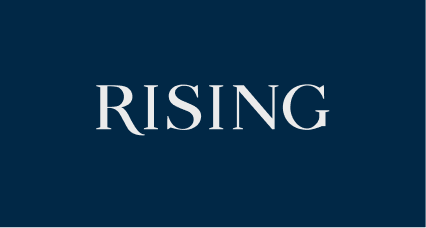

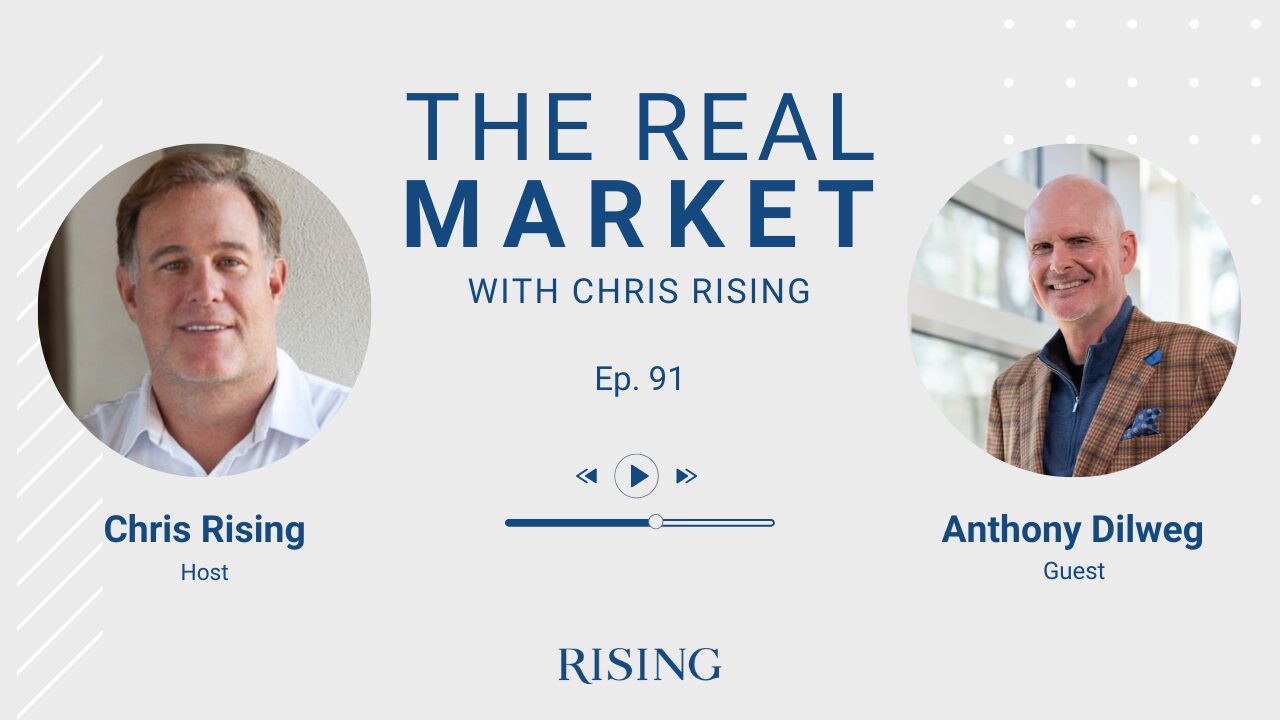
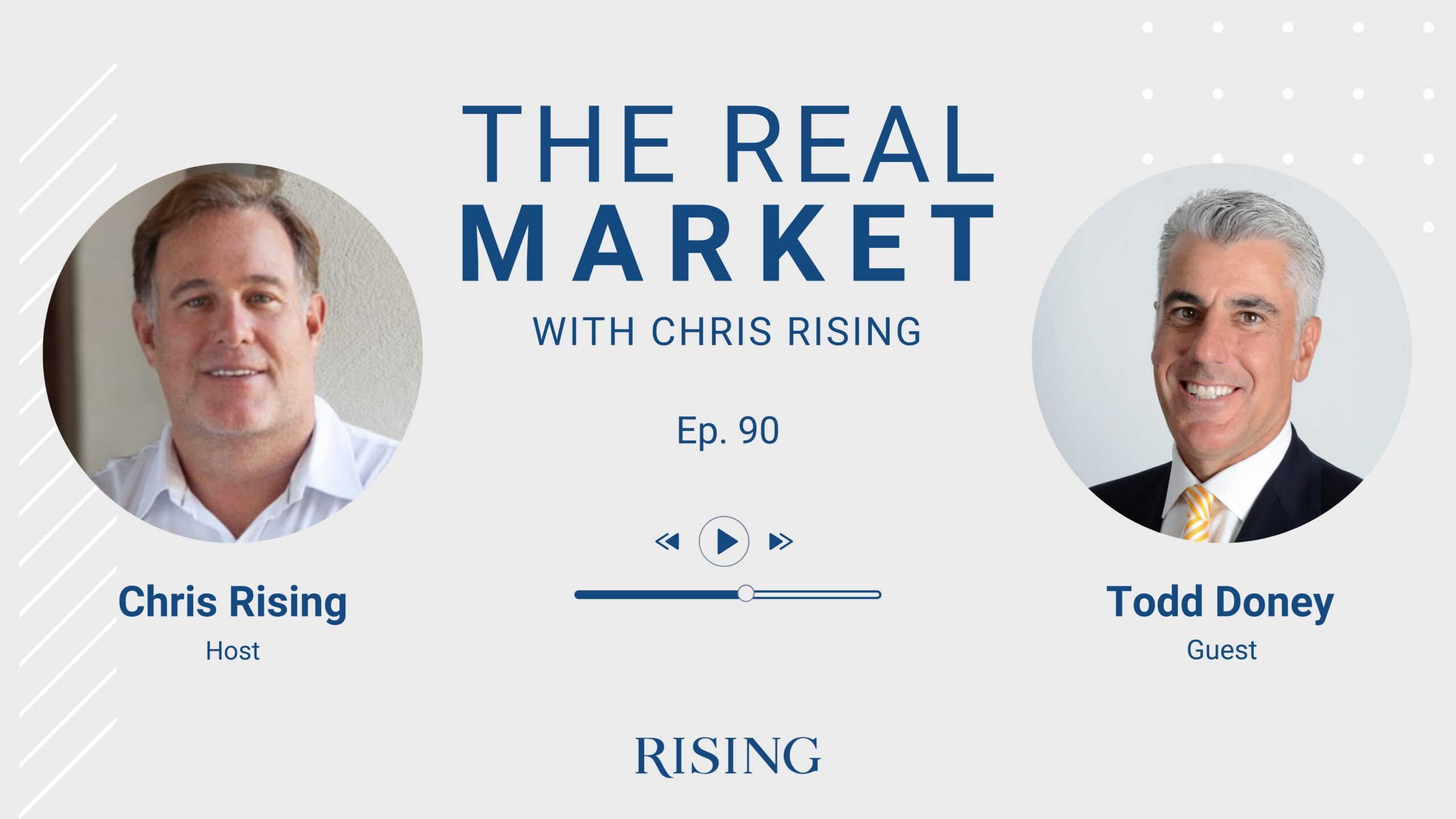
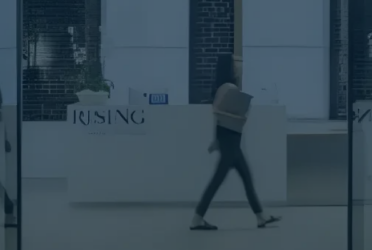
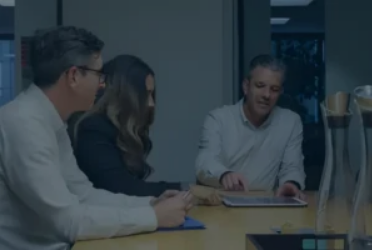
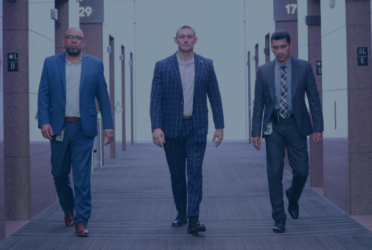
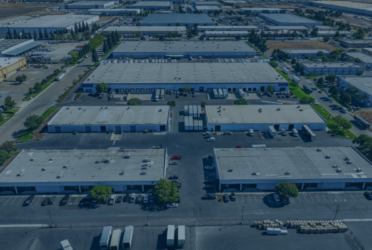
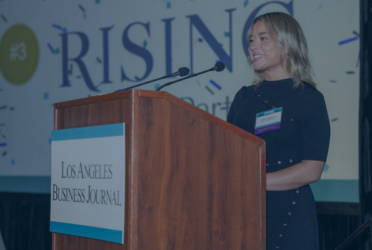
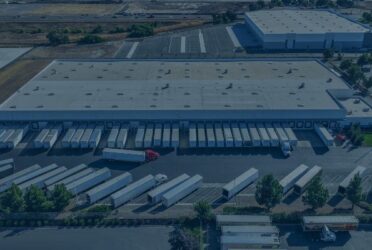
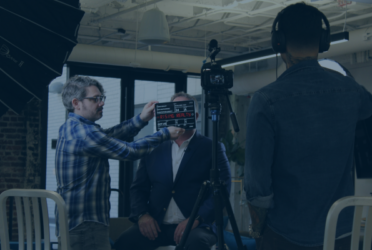
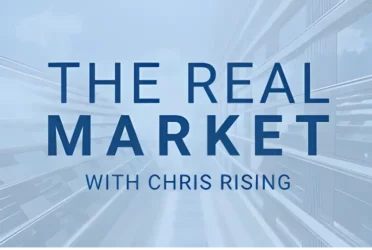 Podcast
Podcast